Traduzione generata automaticamente
Mostra originale
Mostra traduzione
Paul Jouve - Tiger - Original Engraving Editions Rombaldi, Paris, 1950. Copy on velin creme de Rives Artwork by Paul Jouve. Original copper engraving heightened with pochoir. Paul Jouve, who is considered as one of the most famous animal painters of the first half of the 20th century, is also an iconic figure of the Art Deco period. Born in 1878 in Malotte, near Fontainebleau, he was taught the basics of drawing and painting by his father, Auguste Jouve, who was himself a landscape painter and a portraitist. The regular exhibitions of Pau Jouve’s works at the Salon des Artistes français from 1894, followed soon by noticed participations at the Universal Exhibition of 1900, the Salon National des Beaux-Arts in 1905 and finally at the Salon des Artistes Orientalistes in 1906, contributed to the artist’s recognition among his pears and critics. From the 1910’s, he was considered as the leading personality of the new animal painting. The diverse prices and scholarships obtained by Jouve during his career, mixed with a strong and natural appetence for travels, were at the origin of numerous expeditions realized by the painter all around the world, in Algeria, Egypt, Turkey, or the USA ; he was also the first pensionary appointed to join the Villa Abd-el-Tif. Those sojourns, real « laboratories », allowed Paul Jouve to face new horizons, exotics ones, with their wild animals which he loved to reproduce on the paper, the canvas or in the bronze. The Far East journey made by the painter in 1922-1923 is particularly representative of his personality : winner of the scholarship offered by the general government of Indochina, he travelled through Cambodia, Vietnam, China and Ceylon, which landscapes and wildlife inspired Jouve for many drawings, engravings and paintings, such as Two Elephants Side Face, Kandy (1923). The very singular and proper style of Jouve appeared since then : a purified and elegant aesthetic leading his compositions with a subtil chromaticism, while his incisive stroke echoes the graphism of Art Deco. His creations proposed a new apprehension of artistic animal representation ; Jouve described with acuity the psychological state of his subjects, paying attention to the attitudes, the expressions, and nearly humanizing them. From the 1920’s, works of the artistic maturity showed a simplified stroke and a general appeasing of the palette, going with a pacification of the attitudes of the animals, different from the previous aggressivity and violence often enhanced by the painter until then. Paul Jouve was invited to collaborate to the decoration of the prestigious ocean liner the Normandie in 1935 and was, at this occasion, commissioned two paintings for the first classes’ lounge, Elephant in Hue and Tigers drinking, soon reproduced and promoted by the lithograph medium in 1937. Paul Jouve knew fame and glory during his life, partially thanks to the vibrant illustrations he made for several books, such as the famous Jungle book by Rudyard Kipling (1919) ; his talent was never denied and his works are today hung up on the picture rails of the greatest French and international museums.
Paul Jouve - Tiger - Incisione originale Editions Rombaldi, Parigi, 1950. Copia su velin creme de Rives Opera di Paul Jouve. Incisione originale in rame accentuata con pochoir. Paul Jouve, che è considerato come uno dei più famosi pittori di animali della prima metà del XX secolo, è anche una figura iconica del periodo Art Deco. Nato nel 1878 a Malotte, vicino a Fontainebleau, gli furono insegnate le basi del disegno e della pittura da suo padre, Auguste Jouve, lui stesso pittore di paesaggi e ritrattista. Le esposizioni regolari delle opere di Pau Jouve al Salon des Artistes français dal 1894, seguite presto da partecipazioni notate all'Esposizione Universale del 1900, al Salon National des Beaux-Arts nel 1905 e infine al Salon des Artistes Orientalistes nel 1906, contribuirono al riconoscimento dell'artista tra i suoi peri e i critici. A partire dagli anni 1910, fu considerato come la personalità principale della nuova pittura di animali. Le diverse quotazioni e borse di studio ottenute da Jouve nel corso della sua carriera, mescolate a un forte e naturale appetito per i viaggi, furono all'origine di numerose spedizioni realizzate dal pittore in tutto il mondo, in Algeria, Egitto, Turchia o negli Stati Uniti; fu anche il primo pensionato nominato a far parte della Villa Abd-el-Tif. Questi soggiorni, veri "laboratori", permisero a Paul Jouve di affrontare nuovi orizzonti, esotici, con i loro animali selvaggi che amava riprodurre sulla carta, sulla tela o nel bronzo. Il viaggio in Estremo Oriente fatto dal pittore nel 1922-1923 è particolarmente rappresentativo della sua personalità: vincitore della borsa di studio offerta dal governo generale dell'Indocina, viaggiò attraverso la Cambogia, il Vietnam, la Cina e Ceylon, i cui paesaggi e animali selvaggi ispirarono Jouve per molti disegni, incisioni e dipinti, come Two Elephants Side Face, Kandy (1923). Lo stile molto singolare e proprio di Jouve appare da allora: un'estetica purificata ed elegante guida le sue composizioni con un cromatismo sottile, mentre il suo tratto incisivo riecheggia il grafismo dell'Art Deco. Le sue creazioni propongono una nuova comprensione della rappresentazione artistica degli animali; Jouve descrive con acutezza lo stato psicologico dei suoi soggetti, prestando attenzione agli atteggiamenti, alle espressioni, e quasi umanizzandoli. A partire dagli anni 1920, le opere della maturità artistica mostrano un tratto semplificato e un generale alleggerimento della tavolozza, accompagnando una pacificazione degli atteggiamenti degli animali, diversa dalla precedente aggressività e violenza spesso esaltata dal pittore fino ad allora. Paul Jouve fu invitato a collaborare alla decorazione del prestigioso transatlantico Normandie nel 1935 e gli furono, in questa occasione, commissionati due dipinti per il salone delle prime classi, Elefante in tonalità e Tigri che bevono, presto riprodotti e promossi dal mezzo litografico nel 1937. Paul Jouve conobbe fama e gloria durante la sua vita, in parte grazie alle illustrazioni vibranti che fece per diversi libri, come il famoso libro della giungla di Rudyard Kipling (1919); il suo talento non fu mai negato e le sue opere sono oggi appese sulle bacheche dei più grandi musei francesi e internazionali.
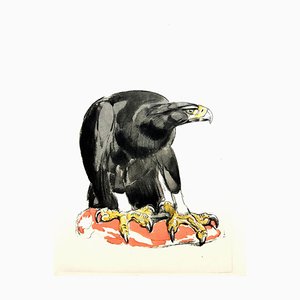
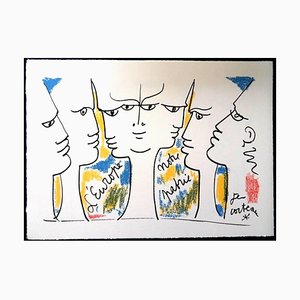

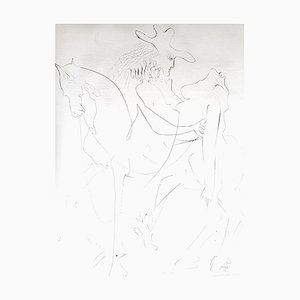
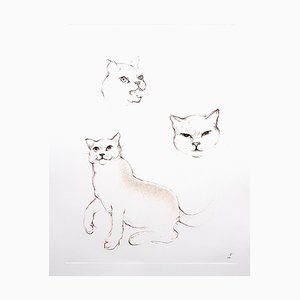

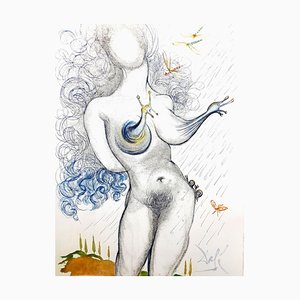
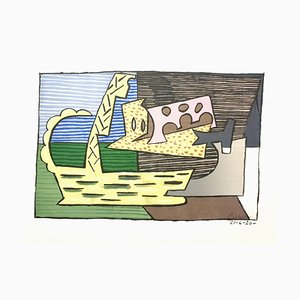

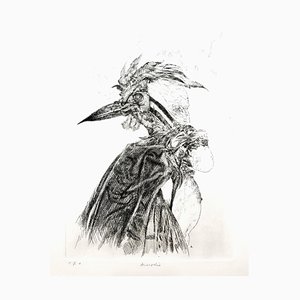
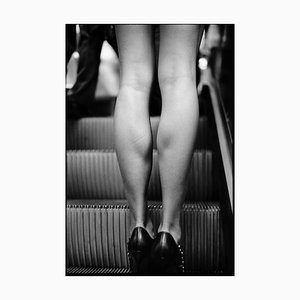
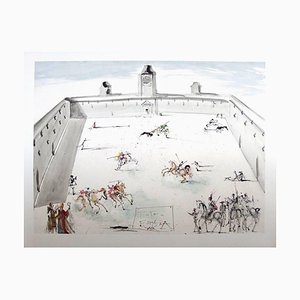
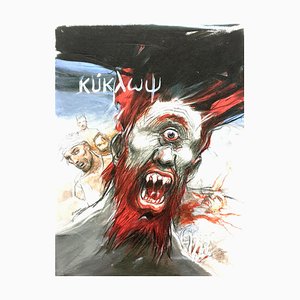
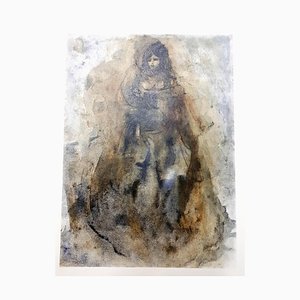
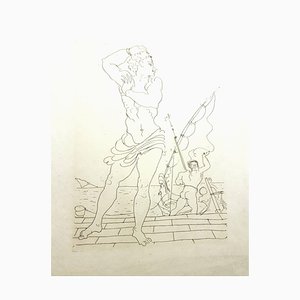
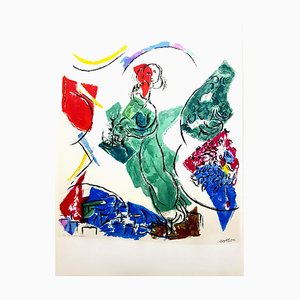
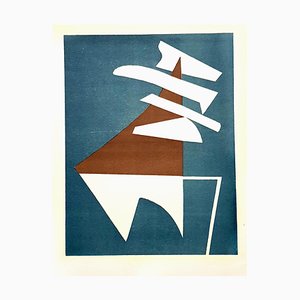
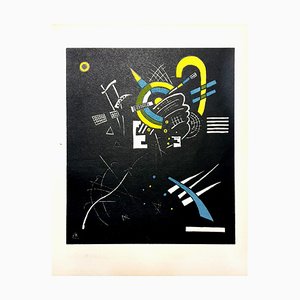
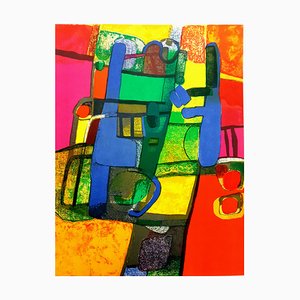
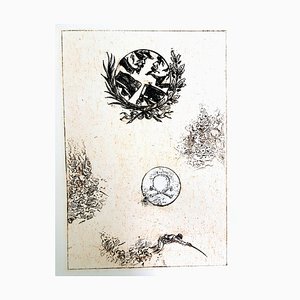
Contattaci
Fai un'offerta
Abbiamo notato che sei nuovo su Pamono!
Accetta i Termini e condizioni e l'Informativa sulla privacy
Contattaci
Fai un'offerta
Ci siamo quasi!
Per seguire la conversazione sulla piattaforma, si prega di completare la registrazione. Per procedere con la tua offerta sulla piattaforma, ti preghiamo di completare la registrazione.Successo
Grazie per la vostra richiesta, qualcuno del nostro team vi contatterà a breve.
Se sei un professionista del design, fai domanda qui per i vantaggi del Programma Commerciale di Pamono